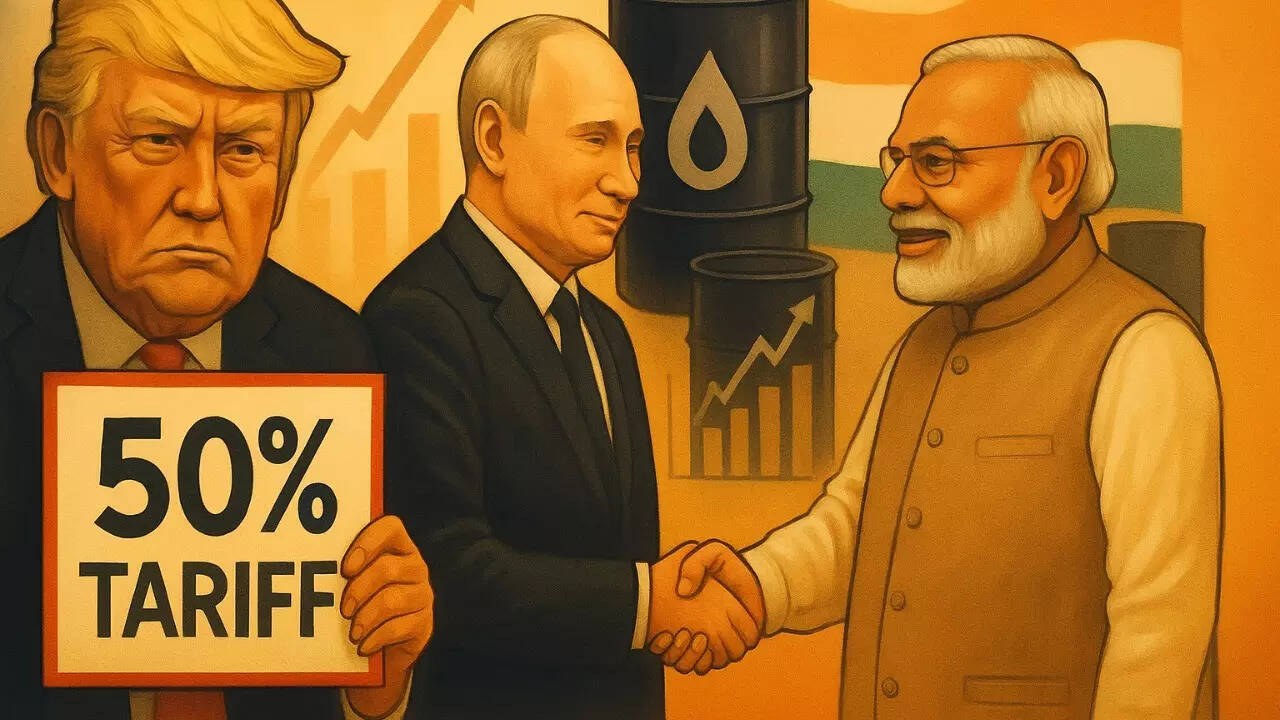India Faces 50% US Tariff Threat Over Russian Oil: The next 20 days are a diplomatic and strategic test for India. US President Donald Trump has announced an additional 25% tariff on India, which will now become 50% in addition to the 25% duty already in force. This decision will come into effect from August 27 and is directly linked to India’s purchase of oil from Russia.
Trump said in his order that India’s oil imports from Russia provide financial support to the Ukraine war. Earlier, a 25% tariff was imposed on August 7 and now the announcement of additional tariffs has created tension in India-US trade relations. This puts India in the league of countries like Brazil, which are already facing high US tariffs.
India has described this decision as “unfair and impractical”. The Ministry of External Affairs clarified that India’s oil imports from Russia are essential for its energy security, and this is a completely market-based decision. India also reminded that when the Ukraine crisis began in 2022, it was the US that prompted India to buy oil from Russia so that global prices remain stable.
According to Bloomberg Economics, this tariff could lead to a 60% drop in India’s exports to the US. Due to this, India’s GDP could suffer a loss of about 1%. India’s GDP growth rate is currently estimated at 6.5%, but experts are warning that it could also go below 6%.
The biggest impact will be on India’s major export sectors such as textiles, jewelry, auto parts, leather and marine products. In 2024, India exported $87 billion to the US, which is its largest trading partner. Organizations like FIEO and GTRI have described it as a setback for Indian industry.
This situation has put India between five major options. On the one hand, there is pressure to finalize the trade agreement with the US, which has pressure to open the agriculture and dairy sector, which is a politically sensitive issue for India. On the other hand, India can show its displeasure by imposing retaliatory tariffs, but experts are advising that the path of dialogue should remain open for the time being.
The third option could be to reduce oil imports from Russia, but this may endanger India’s energy security. The fourth option is to look for new markets and promote domestic consumption, although this will be a long-term strategy. The fifth and most sensitive option is diplomatic balance, in which India will try to maintain its relations with both Russia and America.
Meanwhile, Ajit Doval is in Moscow and is discussing India’s possible role in the Russia-Ukraine peace talks. On the other hand, Prime Minister Narendra Modi has given clear indications that India will not compromise on the interests of its farmers and the poor, no matter what the cost.
The next few weeks will be the real test of India’s foreign policy, energy security and trade strategy. Will India bow down to US pressure or will it maintain its independent policy? The answer to this question will determine India’s position on the world stage in the coming days.
